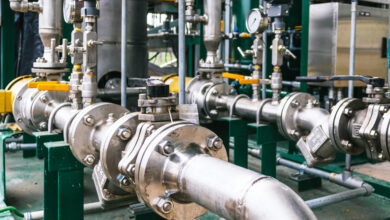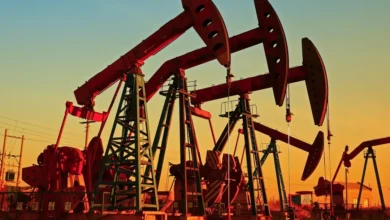Trading in Petroleum Refining Derivatives: A Global Market Overview

Introduction
Petroleum refining derivatives are financial instruments linked to the prices and margins of refined oil products, such as gasoline, diesel, jet fuel, and fuel oil. These derivatives allow traders, refiners, and investors to hedge against price volatility or speculate on market movements. With the global nature of oil refining, trading these derivatives across borders is a critical aspect of energy markets.
This article explores the types of refining derivatives, key trading hubs, major players, pricing mechanisms, and the challenges of international trading.
Types of Petroleum Refining Derivatives
1. Crack Spreads
- Definition: The difference between crude oil prices and refined product prices (e.g., gasoline or diesel).
- Purpose: Refiners use crack spreads to hedge their profit margins.
- Common Crack Spreads:
- Gasoline Crack (RBOB vs. Crude) – Reflects refining margins for gasoline.
- Diesel Crack (ULSD vs. Crude) – Tracks margins for diesel/heating oil.
- 3-2-1 Crack Spread – Represents a typical refinery’s output: 3 barrels of crude → 2 gasoline + 1 diesel.
2. Futures & Options on Refined Products
- Traded on major exchanges:
- NYMEX (CME Group) – RBOB Gasoline, ULSD (Ultra-Low Sulfur Diesel).
- ICE Futures Europe – Gasoil (diesel) futures.
- Shanghai Futures Exchange (SHFE) – Chinese fuel oil and gasoline contracts.
3. Swaps & Over-the-Counter (OTC) Derivatives
- Price Swaps: Agreements to exchange fixed vs. floating refined product prices.
- Differential Swaps: Bet on regional price differences (e.g., Singapore Gasoil vs. Europe).
4. Refining Margin Contracts (RMCs)
- Financial instruments tied to refinery profitability, often based on complex refinery models.
Key Global Trading Hubs for Refined Products
| Hub | Key Products Traded | Why It Matters |
|---|---|---|
| Rotterdam (Europe) | Gasoil, Naphtha, Fuel Oil | Europe’s largest refining and storage hub. |
| Singapore | Gasoline, Diesel, Jet Fuel | Asia’s pricing benchmark; major storage & blending center. |
| Houston (U.S. Gulf Coast) | RBOB Gasoline, ULSD | Largest U.S. refining region; exports to Latin America & Europe. |
| Fujairah (UAE) | Fuel Oil, Middle Distillates | Key bunkering hub for Middle East & Africa. |
| Shanghai (China) | Gasoline, Diesel | Growing influence in Asia’s derivatives market. |
Who Trades Refining Derivatives?
- Oil Refiners – Hedge against margin volatility.
- Commodity Trading Firms – Vitol, Glencore, Trafigura (speculate on price spreads).
- Investment Banks & Hedge Funds – Trade crack spreads for profit.
- Airlines & Shipping Companies – Hedge jet fuel and bunker fuel costs.
Factors Influencing Refining Derivatives Prices
- Crude Oil Price Volatility – Directly impacts refining margins.
- Refinery Outages & Maintenance – Supply disruptions tighten product markets.
- Seasonal Demand –
- Summer: Higher gasoline demand (U.S. driving season).
- Winter: Higher diesel/heating oil demand (Europe, Northeast Asia).
- Regulatory Changes –
- IMO 2020 (low-sulfur fuel rules shifted refining dynamics).
- Biofuel blending mandates (impact gasoline/diesel cracks).
- Geopolitical Events –
- Sanctions (Russia’s diesel exports affected EU prices).
- Middle East conflicts (risk premium on shipping fuels).
Challenges in Trading Refining Derivatives Internationally
1. Regulatory Differences
- Varying rules on derivatives trading (e.g., EU’s MiFID II vs. U.S. CFTC regulations).
- Sanctions (e.g., Russian oil products restricted in G7 markets).
2. Logistics & Storage Risks
- Tanker freight costs impact arbitrage opportunities.
- Storage congestion (e.g., 2020 COVID demand crash led to negative prices).
3. Margin Volatility
- Refining margins can swing wildly due to unexpected supply-demand shifts.
4. Shift to Clean Energy
- Rising electric vehicles (EVs) may reduce long-term gasoline demand.
- Biofuels and hydrogen could disrupt traditional refining economics.
Future Trends in Refining Derivatives Trading
- Digitalization & Algorithmic Trading – AI-driven models optimize crack spread trades.
- Alternative Fuel Derivatives – Biofuel and renewable diesel contracts gain traction.
- Emerging Market Growth – India and Southeast Asia increase derivatives liquidity.
- Carbon Pricing Impact – Refining margins may incorporate carbon costs in Europe & North America.
Conclusion
Petroleum refining derivatives are essential tools for managing risk and capitalizing on market opportunities in the global oil industry. As refining margins face pressure from energy transitions and geopolitical shifts, traders must adapt to new regulations, alternative fuels, and digital trading innovations.
For those involved in energy markets, mastering refining derivatives—from crack spreads to regional arbitrage—is key to navigating this complex but lucrative sector.



